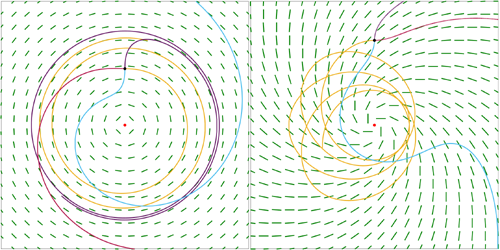Steering Swimmers with Polarization Patterns
Light-sensitive biological cells could form the basis of controllable active matter—self-driven units that turn energy from the environment into motion. Most of the demonstrated schemes exploit the response of cells to gradients in light intensity. Now, Siyuan Yang at Shanghai Jiao Tong University, China, and colleagues show that they can direct the motion of a collection of cells using patterns of polarized light [1].
Light-seeking (phototaxic) behavior is common among photosynthetic microorganisms. The species that Yang and colleagues studied—a single-celled, self-propelled alga called Euglena gracilis—is also polarotaxic, meaning that the cells will swim perpendicularly to the polarization direction of linearly polarized light.
To activate this motion, the researchers used a beam of linearly polarized blue light imprinted with a ring-, star-, or spiral-shaped pattern. This patterning was achieved by placing a linear polarizer and a liquid-crystal plate between the light source and a chamber housing the cells. Previous studies of polarotaxic microswimmers employed uniformly polarized light fields and generated cell distributions with no net motion—cells swimming in one direction were balanced by those swimming in the opposite direction. The patterned polarized light fields used by Yang and colleagues, in contrast, induced net motion, separating populations of cells swimming in opposite directions.
E. gracilis cells swim by waving their flagella, an action that pushes water behind them. The team found that this locally coordinated cell motion set up coherent flows within the chamber that changed with the polarization pattern. They say that this effect could be used for the manipulation of material transport in microfluidics and for the targeted drug delivery.
–Marric Stephens
Marric Stephens is a Corresponding Editor for Physics Magazine based in Bristol, UK.
References
- S. Yang et al., “Controlling cell motion and microscale flow with polarized light fields,” Phys. Rev. Lett. 126, 058001 (2021).




